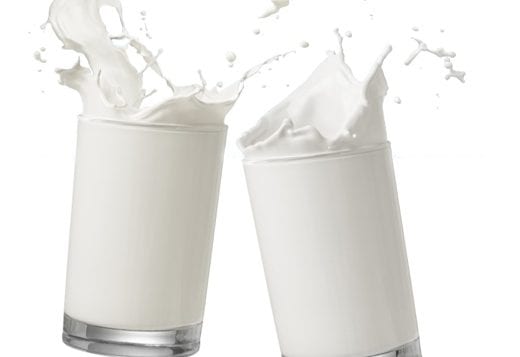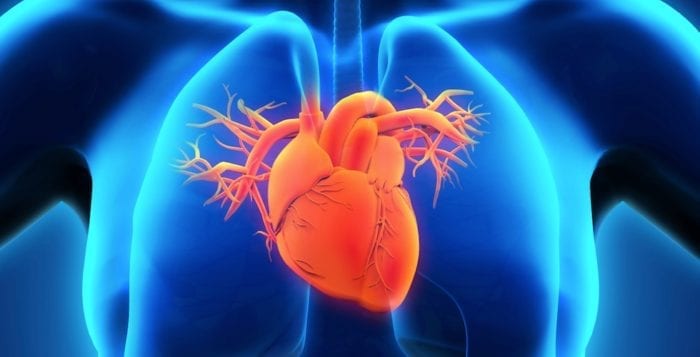Most identified incidentally are benign
By David Dunaief, M.D.

More than 50 percent of people have thyroid nodules detectable by high-resolution ultrasound (1). Fortunately, most are benign. A small percent, 4 to 6.5 percent, are malignant, with the number varying depending on the study (2). Thyroid nodules are being diagnosed more often incidentally on radiologic exams, such as CT scans of the chest, MRI scans, PET scans and ultrasounds of the carotid arteries in the neck (3).
There is a conundrum of what to do with a thyroid nodule, especially when it is found incidentally. It depends on the size. If it is over one centimeter, usually it is biopsied by fine needle aspiration (FNA) (4). While most are asymptomatic, if there are symptoms, these might include difficulty swallowing, difficulty breathing, hoarseness, pain in the lower portion of the neck and a goiter (5).
FNA biopsy is becoming more common. In a study evaluating several databases, there was a greater than 100 percent increase in thyroid FNAs performed over a five-year period from 2006 to 2011 (6). This resulted in a 31 percent increase in thyroidectomies, surgeries to remove the thyroid partially or completely.
However, the number of thyroid cancers diagnosed with the surgery did not rise in this same period. Though the number of cancers diagnosed has increased, the mortality rate has remained relatively stable over several decades at about 1,500 patients per year (7). Thyroid nodules in this study were least likely to be cancerous when the initial diagnosis was by incidental radiologic exam.
Treating borderline results
As much as 25 percent of FNA biopsies are indeterminate. We are going to look at two modalities to differentiate between benign and malignant thyroid nodules when FNA results are equivocal: a PET scan and a molecular genetics test. A meta-analysis (a group of six studies) of PET scan results showed that it was least effective in resolving an unclear FNA biopsy. The PET scan was able to rule out patients who did not have malignancies, but did not do a good job of identifying those who did have cancer (8).
On the other hand, a molecular-based test was able to potentially determine whether an indeterminate thyroid nodule by FNA was malignant or benign (9).
Unlike in the PET scan study above, the researchers were able to not only rule out the majority of malignancies but also to rule them in. It was not perfect, but the percent of negative predictive value (ruled out) was 94 percent, and the positive predictive value (ruled in) was 74 percent. The combination test improved the predictive results of previous molecular tests by 65 to 69 percent. This is important to help decide whether or not the patient needs surgery to remove at least part of the thyroid.
Significance of calcification on ultrasound
Microcalcifications in the nodule can be detected on ultrasound. The significance of this may be that patients with microcalcifications are more likely to have malignant thyroid nodules than those without them, according to a small prospective study involving 170 patients (10). This does not mean necessarily that a patient has malignancy with calcifications, but there is a higher risk.
Good news
As I mentioned above, most thyroid nodules are benign. The results of one study go even further, showing that most asymptomatic benign nodules do not progress in size significantly after five years (11). The factors that did contribute to growth of about 11 percent of the nodules were age (<45 years old had more growth than >60 years old), multiple nodules, greater nodule volume at baseline and being male.
The authors’ suggestion is that, after the follow-up scan, the next ultrasound scan might be five years later instead of three years. However, they did discover thyroid cancer in 0.3 percent after five years.
Thyroid function may contribute to risk
In considering risk factors, it’s important to note that those who had a normal thyroid stimulating hormone (TSH) were less likely to have a malignant thyroid nodule than those who had a high TSH, implying hypothyroidism. There was an almost 30 percent prevalence of cancer in the nodule if the TSH was greater than >5.5 mU/L (12).
The bottom line is that there is an urgent need for new guidelines regarding thyroid nodules. Fortunately, most nodules are benign and asymptomatic, but the number of cancerous nodules found is growing. Why the death rate remains the same year over year for decades may have to do with the slow rate at which most thyroid cancers progress, especially two of the most common forms, follicular and papillary.
References:
(1) AACE 2013 Abstract 1048. (2) Thyroid. 2005;15(7):708. (3) uptodate.com. (4) AACE 2013 Abstract 1048. (5) thyroid.org. (6) AAES 2013 Annual Meeting. Abstract 36. (7) AACE 2013 Abstract 1048. (8) Cancer. 2011;117(20):4582-4594. (9) J Clin Endocrinol Metab. Online May 12, 2015. (10) Head Neck. 2008 Sep;30(9):1206-1210. (11) JAMA. 2015;313(9):926-935. (12) J Clin Endocrinol Metab. 2006;91(11):4295.
Dr. Dunaief is a speaker, author and local lifestyle medicine physician focusing on the integration of medicine, nutrition, fitness and stress management.
We invite you to check out our weekly Medical Compass MD Health Videos on Times Beacon Record News Media’s website, www.tbrnewsmedia.com.















